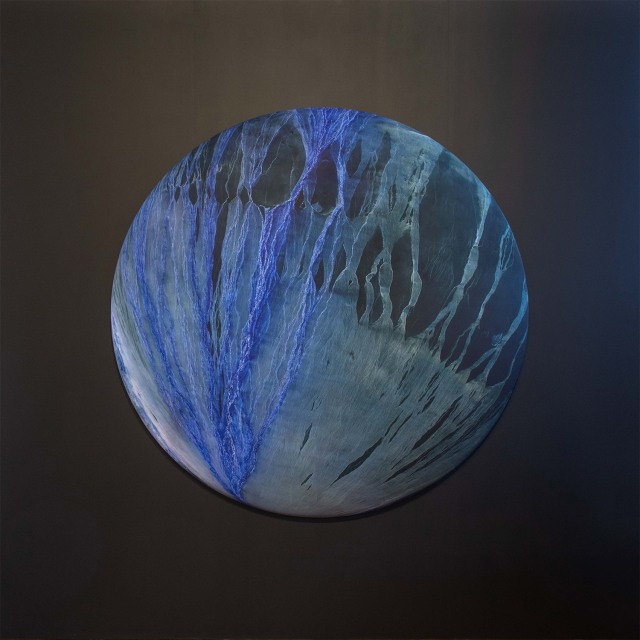Artist Elizabeth Thomson has for three decades produced works of technical virtuosity that consider the interplay between art and forms of natural science. A self-proclaimed interdisciplinary and conceptual artist, Thomson works with a range of sculpture, painting, printmaking and photography.
Born in Auckland in 1955, Thomson graduated with Master of Fine Arts with First Class Honours from Elam School of Fine Arts, University of Auckland, in 1988. She moved to Wellington in 1991 where she currently lives and works as a full-time artist in a studio in Newtown. She exhibits in galleries overseas and widely throughout New Zealand, with her relief sculptures and prints being held in major public and private collections here and abroad. Thomson has received numerous awards and grants for her work and has taught courses in an array of media and institutions.
In 2006, her contribution to New Zealand art was recognised and celebrated through a major 20 year on retrospective Elizabeth Thomson: My Hi-Fi, My Sci- Fi, curated by Gregory O’Brien for City Art Gallery, Wellington. The exhibition toured 5 key public venues throughout New Zealand complemented by a 50-page catalogue publication
Her approach can be at times described as surrealist, while at others she is an isolated observer of the esoteric and the remote. Her abstracted geometric compositions incorporate a variety of botanical, entomological and molecular forms, compellingly recreated through her study of the natural world. Thomson’s work draws on music, philosophy and mathematics as well as the material world surrounding her. Early on, delicate facsimiles of leaves and moths had us paying attention to humble things.
After visiting the Kermadecs on an artist residence program in 2011, Thomson fell in love with the vastness of the sea – almost incandescently blue. Intrigued by its immensity and intricacies, Thomson considers its exploration, and the oceans specific yet mysterious grasp on our subconscious. Then, the sandstone flats of Mahia offered details of line and form that were a revelation. Her trick though, and this is the sculptors ability, has been to forge material combinations including photographs on vinyl, subtly undulating grounds, glass beads and white flocking that warm our eyes to her concerns. Her work sits on the edge between the recognised and the unrecognisable, the exquisite and the uncomfortable. She challenges the notion of the ‘beautiful’, her refined practice redefining how we consider innate beauty seen within the physical world. Joyful and sumptuous describes Thomson’s sense of scale, texture and depth. Magnificent outcomes of optical illusion are achieved through her technical brilliance. Thomson plays with repetitive pattern, abstracted form, the formal and the harmonious, while still looking to the fractures and disjoints of the natural world.
